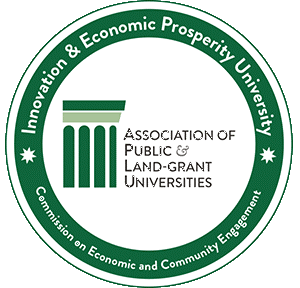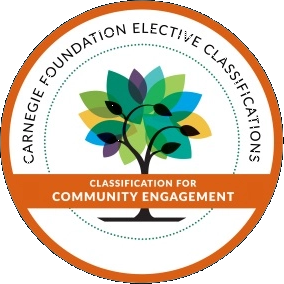What are broader impacts?
Along with the review of the intellectual merit of each proposal, the National Science Foundation (NSF) reviews the merit of its broader impacts – the impacts and benefits to society of your proposed research. Each proposal submitted to the NSF must include a section about its intended broader impacts.
Consideration of broader impacts, however, is not limited to NSF proposals. Broader impacts (BI) may be framed in terms of outreach, community-engaged scholarship, translation, dissemination, public humanities, community-based participatory research, community-based teaching and learning, diversity/inclusion/equity, and so forth.
What qualifies as broader impacts?
Broader impacts goals may address, but are not limited to:
- Full participation of women, persons with disabilities, and underrepresented minorities in science, technology, engineering, and mathematics (STEM)
- Improved STEM education and educator development at any level
- Increased public scientific literacy and public engagement with science and technology
- Improved well-being of individuals in society
- Development of a diverse, globally competitive STEM workforce
- Increased partnerships among academia, industry, and others
- Improved national security
- Increased economic competitiveness of the United States
- Enhanced infrastructure for research and education
Learn More
- NSF Grant Proposal Guide
- Perspectives on Broader Impacts (NSF)
- Subscribe to the MSU Broader Impacts Network e-mail list
How are broader impacts reviewed?
Just as the science is reviewed for intellectual merit, broader impacts are reviewed based on the following questions:
- What is the potential for the proposed activity to benefit society and contribute to achievement of specific desired societal outcomes?
- To what extent do the proposed activities suggest and explore creative, original, or potentially transformative concepts?
- Is the plan for carrying out the proposed activities well-reasoned, well organized, and based on a sound rationale? Does the plan incorporate a mechanism to assess success?
- How well qualified is the individual, team, or institution to conduct the proposed activities?
- Are there adequate resources available to the PI (either at the home institution or through collaborations) to carry out the proposed activities? Is the budget allocated for broader impact activities sufficient to successfully implement them?
Broadening participation
Go to Toolkit for Broadening Participation in STEM from InformalScience.org
See resources for broadening participation of women in STEM
Examples of broader impacts activities
The links below offer examples of broader impacts activities:
-
National Science Foundation (NSF), Office of Integrative Activities
The NSF Office of Integrative Activities gives examples of the many forms that broader impacts can take. -
National Alliance for Broader Impacts (NABI), Repository and Digital Library
The NABI Repository and Digital Library allows users to add projects to the repository or browse and download proposals and other resources. -
American Association for the Advancement of Science (AAAS), Center for Public Engagement with Science & Technology
The AAAS Center for Public Engagement with Science and Technology discusses the various types of public engagement activities, along with their goals and approaches. -
COSEE NOW Case Studies
The Centers for Ocean Sciences Education Excellence Networked Ocean World has a series of case studies that highlight successful broader impact activities from the scientists’ perspective. Each case study includes an interview with the scientist involved on what they did, how they got involved, who they worked with, any challenges and benefits, what it cost, and how they measured the success. -
The Michigan Public Engagement Framework
The Michigan Public Engagement Framework identifies 12 general areas of public engagement.








